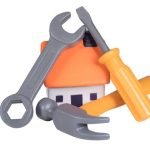What counts as home improvement? Home improvement encompasses a wide range of projects aimed at enhancing the appearance, comfort, and functionality of a home. From minor repairs to major renovations, homeowners engage in these activities to create a space that reflects their personal style and meets their needs. Home improvement is not just about aesthetics; it also adds value to the property and enhances overall quality of life for residents.
One of the key reasons why home improvement is important for homeowners is the opportunity to customize and personalize their living space. Whether it’s updating outdated features, expanding living areas, or creating a more energy-efficient environment, home improvement projects allow individuals to tailor their surroundings to better suit their tastes and lifestyle. Additionally, investing in home improvement can significantly increase the resale value of a property, making it a smart financial decision in the long run.
As homeowners embark on various home improvement projects, they often consider popular options such as kitchen remodeling, bathroom renovations, and landscaping upgrades. These projects not only enhance the visual appeal of the home but also improve its functionality and comfort. While some may opt for DIY approaches to save costs, others prefer hiring professionals for a faster and more polished result. Budgeting effectively for these projects is crucial in order to manage expenses and achieve desired outcomes within financial constraints.
Common Home Improvement Projects
Kitchen Remodeling
Kitchen remodeling is one of the most popular home improvement projects that homeowners undertake. This project typically involves updating cabinets, countertops, appliances, and fixtures to create a more functional and aesthetically pleasing space.
Whether it’s a minor kitchen upgrade or a full-scale renovation, improving the heart of the home can significantly increase property value and enhance overall quality of life. From modernizing outdated styles to maximizing storage space, there are numerous ways to transform a kitchen into a more efficient and inviting area for cooking and entertaining.
Bathroom Renovations
Bathroom renovations are another common home improvement project that can make a big impact on both comfort and resale value. Upgrading fixtures, adding a new vanity, or installing a luxurious shower can turn an ordinary bathroom into a spa-like retreat.
Improving ventilation, lighting, and overall layout are also key considerations when planning a bathroom renovation. Whether it’s creating more storage space or enhancing accessibility for aging in place, bathroom upgrades offer both practical benefits and aesthetic appeal for homeowners looking to enhance their living spaces.
Landscaping Upgrades
Enhancing outdoor spaces through landscaping upgrades is another popular home improvement project that can boost curb appeal and create enjoyable outdoor living areas. From simple enhancements like planting colorful flowers or adding new mulch to more extensive projects like building decks or installing outdoor kitchens, landscaping upgrades can transform the exterior of a property.
Improving drainage systems, creating pathways, or adding privacy hedges are also important considerations when planning landscaping projects. Investing in well-maintained outdoor spaces not only enhances the visual appeal of a property but also contributes to overall property value and enjoyment for homeowners.
DIY vs Professional Home Improvement
DIY home improvement projects have gained popularity among homeowners looking to save money and showcase their skills. These projects can range from small tasks like painting walls to more complex undertakings such as installing new flooring or building furniture.
One of the advantages of DIY home improvement is the sense of accomplishment and pride that comes from completing a project with your own hands. Additionally, DIY projects allow for greater customization and control over the outcome, giving homeowners the flexibility to implement their ideas exactly as they envision them.
However, there are certain limitations to DIY home improvement projects that homeowners should consider. While tackling tasks on your own can be cost-effective in some cases, it may end up being more expensive if mistakes are made and professional help is needed to correct them.
Furthermore, some projects require specialized skills and tools that homeowners may not possess, leading to potential safety hazards or subpar results. In such instances, hiring professionals with expertise in specific areas can ensure the work is done properly and efficiently.
In weighing the pros and cons of DIY versus professional home improvement, it’s essential for homeowners to evaluate their skill level, available time, budget constraints, and overall project complexity. For simple tasks that don’t involve structural changes or electrical/plumbing work, DIY may be a viable option. However, for larger-scale renovations or projects requiring technical expertise, enlisting the services of trained professionals is often the safer and more practical choice.
| Pros of DIY Home Improvement | Cons of DIY Home Improvement |
|---|---|
| Sense of accomplishment | Potential for costly mistakes |
| Customization & control | Lack of specialized skills/tools |
| Cost-effective in some cases | Safety hazards if not done correctly |
Budgeting for Home Improvement
Another important strategy for budgeting for home improvement projects is to prioritize your needs over wants. Determine which aspects of your home require immediate attention and focus your budget on those areas first.
This will ensure that essential repairs or upgrades are completed within your financial constraints before moving on to more aesthetic improvements. Setting aside a contingency fund for unexpected expenses is also recommended as it can help prevent delays or compromises in quality if additional costs arise during the project.
It’s also beneficial to explore financing options for larger home improvement projects that may exceed your current budget. Options such as home equity loans, personal loans, or credit cards can provide the necessary funds to complete your project without draining your savings account. However, it’s important to carefully consider the interest rates and repayment terms associated with these financing options to ensure they align with your long-term financial goals.
| Effective Budgeting Tips | Benefits |
|---|---|
| Research average project costs | Helps set realistic budget |
| Prioritize needs over wants | Ensures essential repairs are completed first |
| Set aside contingency fund | Prevents delays or compromises in quality due to unexpected expenses |
Importance of Curb Appeal
Curb appeal plays a crucial role in home improvement as it is the first impression people get of your property. It encompasses all the visual aspects of a home’s exterior, from landscaping to the overall condition of the property. A well-maintained and visually appealing exterior can significantly increase the value of a home, making it more attractive to potential buyers or renters. Here are some key reasons why curb appeal is essential in home improvement:
- Increases Property Value: A study by the National Association of Realtors found that homes with high curb appeal tend to sell for higher prices than those with neglected exteriors. Investing in improving your home’s curb appeal can provide a solid return on investment when it comes time to sell.
- Makes a Lasting Impression: The exterior of your home is the first thing that guests or potential buyers see when approaching your property. A visually appealing façade can create a positive first impression and set the tone for their overall perception of the home.
- Enhances Neighborhood Aesthetics: Improving your home’s curb appeal not only benefits you as a homeowner but also contributes to the overall attractiveness of your neighborhood. Well-maintained homes and landscapes enhance the visual appeal of the entire community.
By focusing on enhancing your home’s curb appeal through landscaping, exterior maintenance, and small cosmetic touches, you can make your property stand out in a competitive real estate market. Whether you are looking to sell or simply want to create a welcoming environment for yourself and your family, investing in curb appeal is an important aspect of any home improvement project.
Always remember that first impressions matter, and improving the visual aesthetics of your property can go a long way in boosting its value and overall desirability.
Eco-Friendly Home Improvement
Here are some examples of eco-friendly home improvement projects that homeowners can consider:
- Installing solar panels to reduce energy consumption and lower utility bills.
- Switching to energy-efficient appliances to decrease electricity use.
- Using low-VOC (volatile organic compounds) paint and finishes to improve indoor air quality.
By incorporating these eco-friendly practices into home improvement projects, homeowners can significantly reduce their carbon footprint and create a more environmentally friendly living space. Additionally, many of these upgrades can also increase the value of a property, making them a worthwhile investment for the future.
Moreover, sustainable living is not just about the immediate benefits but also about ensuring a better future for generations to come. By embracing eco-friendly home improvement practices, homeowners can play a part in contributing to a more sustainable environment and promoting a greener lifestyle overall. What counts as home improvement goes beyond just aesthetics – it’s about making conscious choices that have a positive impact on both our homes and the planet.
Home Improvement for Rental Properties
When it comes to home improvement for rental properties, there are unique considerations that landlords and property owners need to keep in mind. Unlike improving a personal residence, rental property improvements require a strategic approach to ensure that the investment yields returns and attracts tenants. In this section, we will delve into the specifics of what counts as home improvement for rental properties and how landlords can make smart decisions to enhance their investments.
Property Upgrades to Attract Tenants
One crucial aspect of home improvement for rental properties is making upgrades that will attract potential tenants and increase the property’s appeal. This could include cosmetic upgrades such as fresh paint, updated fixtures, modern appliances, and stylish flooring options. Additionally, addressing any maintenance issues promptly can also improve the overall condition of the property and make it more desirable for renters.
Budgeting Considerations for Rental Property Improvements
When budgeting for home improvement projects on rental properties, it’s essential to strike a balance between investing in upgrades that will increase the property’s value and ensuring that the expenses are justified by potential rental income. Landlords should carefully assess the return on investment (ROI) of each project before moving forward with renovations or upgrades. Setting a realistic budget and prioritizing essential improvements can help landlords maximize their resources effectively.
Rental Regulations and Compliance
Another critical consideration when embarking on home improvement projects for rental properties is ensuring compliance with local regulations and building codes. Landlords must be aware of any specific requirements or restrictions related to rental properties in their area to avoid potential legal issues or fines. Additionally, keeping up with maintenance tasks and conducting regular inspections can help prevent costly repairs down the line, ultimately contributing to the long-term success of the rental property.
Maintenance vs Improvement
When it comes to making changes to our homes, the line between what counts as home maintenance and what qualifies as a home improvement project can sometimes get blurred. The key distinction lies in understanding that maintenance tasks are routine upkeep activities meant to preserve the current condition of your property, while improvement projects are deliberate efforts to enhance and update your living space. This differentiation is crucial for homeowners looking to prioritize their to-do lists effectively.
While changing light bulbs or fixing leaky faucets fall under the category of home maintenance, repainting walls, replacing flooring, or renovating a bathroom would be considered home improvement projects. Knowing the difference between these tasks can help homeowners allocate their time and resources more efficiently. Prioritizing maintenance tasks ensures that your home remains safe and functional, while planning improvement projects adds value and enhances your overall living experience.
Ultimately, what counts as home improvement is any deliberate action taken to enhance the appearance, functionality, or value of your property. Whether it’s a minor update like changing cabinet hardware or a major renovation like adding an outdoor deck, every effort made towards bettering your living space falls under the umbrella of home improvement.
By differentiating between maintenance and improvement tasks, homeowners can navigate their to-do lists with clarity and purpose, achieving their desired outcomes efficiently while ensuring that their homes remain safe and well-maintained for years to come.
Frequently Asked Questions
What Does the IRS Consider Home Improvements?
The IRS considers home improvements as upgrades that add value to your property, such as remodeling a kitchen or bathroom, adding a new roof, installing a new HVAC system, or building an addition to the home. These improvements must enhance the value, prolong the useful life, or adapt the home to new uses.
What Happens if You Don’t Have Receipts for Home Improvements?
If you don’t have receipts for home improvements, it may be challenging to prove their cost and legitimacy to the IRS if audited. However, you can try to reconstruct the records with credit card statements, bank records, contractor estimates or invoices, and other documents that show the amount spent on the improvements.
What Receipts Should Be Kept for Home Improvements?
Receipts that should be kept for home improvements include invoices from contractors detailing labor and material costs, receipts for materials purchased directly by the homeowner, permits obtained for the work done (if applicable), warranties for materials used or work performed, as well as any before-and-after photos of the improvements made.
Keeping thorough documentation will help substantiate expenses in case of an audit by the IRS.

I’m thrilled to have you here as a part of the Remodeling Top community. This is where my journey as an architect and remodeling enthusiast intersects with your passion for transforming houses into dream homes.





